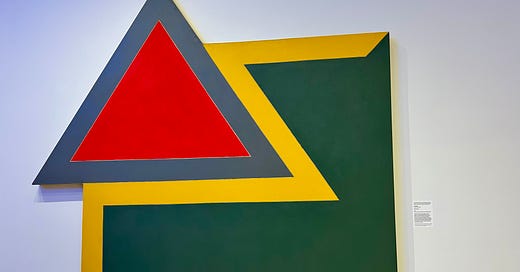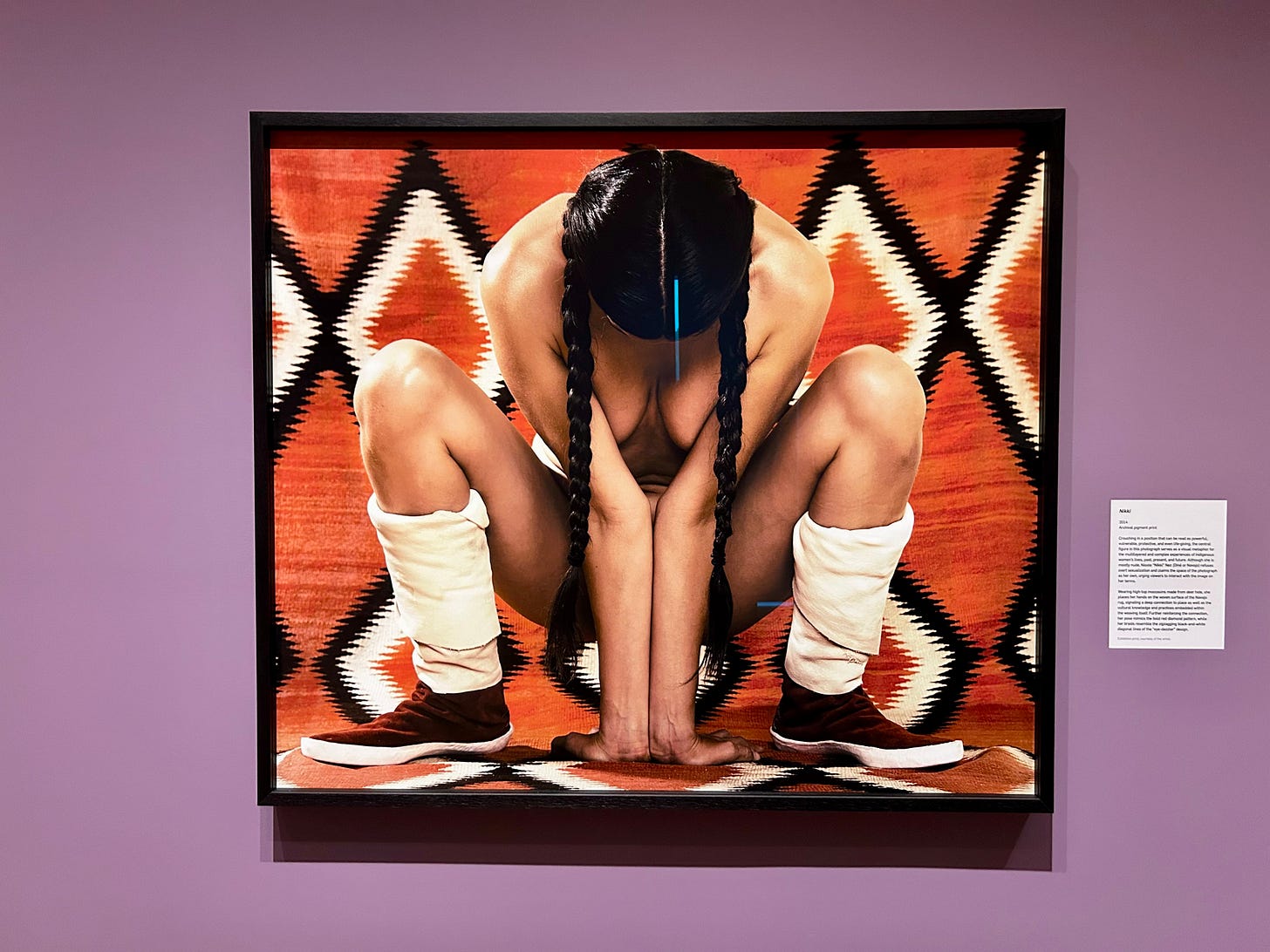
I came for the Frank Stella and stayed for the Cara Romero.
On yet another in a series of rainy Saturdays—apparently a number now approaching double digits—the Hood Museum of Art was the place to take refuge and feast the eyes. A recently mounted exhibition on abstract art, Always Already: Abstractionism in the United States, and specifically, a video on Facebook of workers installing a breaking-out-of the-rectangle Frank Stella work, are what drew me. The entire exhibition is more than satisfying, tucked away on the second floor of the museum.
I will keep spoilers to a minimum, because the joy of discovery was part of the fun. But I would be remiss if I did not mention the two strategically placed comfortable chairs just in front of Lilac and Orange Over Ivory by Mark Rothko (lilac?) where you can positively lounge and view until you want to stop. Turn your head to the right and just behind your shoulder is a characteristically paint-drenched work by Helen Frankenthaler. Then (don’t miss this) meander over to the vitrine where you can have a seat and watch the world go by and the Hopkins Center construction continue (even on a Saturday and in the rain.)
The Hood is also hosting the landmark exhibition Cara Romero: Panûpünüwügai (Living Light), the first major solo museum exhibition of artist Cara Romero’s photographs. Her work is stylistically diverse; grand in scale photographs, unexpected juxtapositions, certainly pack a visual punch. Large exhibitions for me are often overwhelming and I tend to concentrate on a single gallery at a time. Saturday’s gallery featured a series of portraits titled Rematriation: Empowering Women. (See photo above). Empowered and empowering indeed, these women are memorable, strong. Said of Nikki:
Crouching in a position that can be read as powerful, vulnerable, protective, and even life-giving, the central figure in this photograph serves as a visual metaphor for the multilayered and complex experiences of Indigenous women's lives, past, present, and future.
I think it's important for viewers to understand that my figurative women are not meant to be just human. They are meant to be of elevated, supernatural stature. The spirit of ancestors we possess.
—Cara Romero
Admission to the Hood Museum is free. The museum is located on the Dartmouth College campus in downtown Hanover, New Hampshire. For more information about the museum and the exhibitions, click here. Cara Romero: Panûpünüwügai (Living Light) will be on view until August 10, 2025.
—————————————————
On a related, if geographically removed, note: The Victoria and Albert Museum in London has opened an enormous museum storage area to the public to browse the part of its collection that is not on display, including 250,000 items and more. You can even “order up an object” for your own up close and personal observation. Dear reader, are you by chance London bound sometime soon? Check it out and report back! Click here for the story.
—————————————————
Thank you! You’re reading Artful, a blog about arts and culture in the Upper Valley, and I hope you’ll subscribe (still free) and then share this post with your friends and on your social media. We are closing in on a total of 3200 subscribers.
And in case you are wondering . . . Susan B. Apel shuttered a lifelong career as a law professor to continue an interest (since kindergarten) in writing. Her freelance business, The Next Word, includes literary and feature writing; her work has appeared in a variety of lit mags and other publications including Art New England, The Woven Tale Press, The Arts Fuse, and Persimmon Tree. She connects with her neighbors through Artful, her blog about arts and culture in the Upper Valley. She’s in love with the written word.



